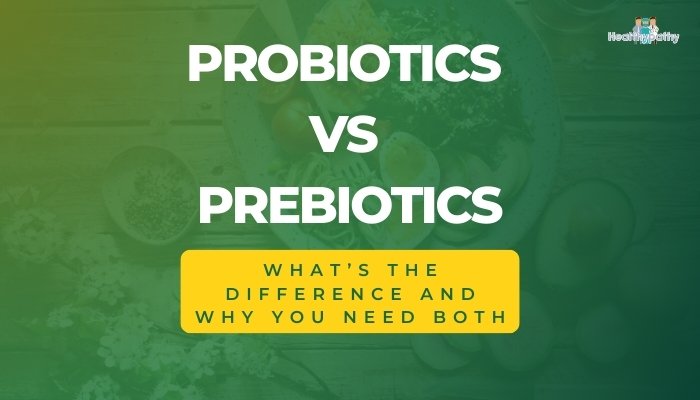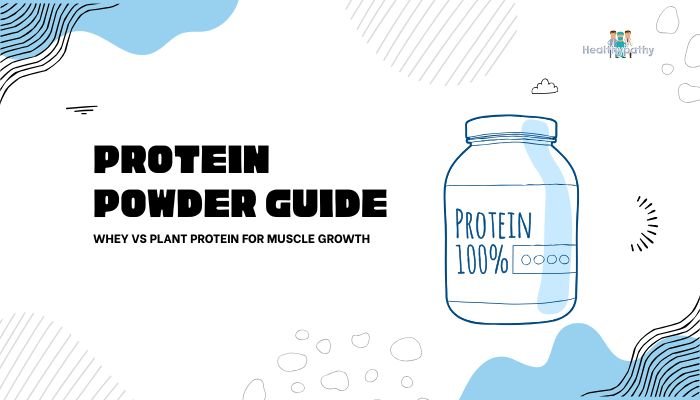Introduction
Food choices influence health, personal ethics, and the environment. Among these decisions, consumers often debate the merits of plant-based meat versus real meat (animal-derived). Grocery aisles and restaurant menus now feature plant-based patties, sausages, and nuggets alongside traditional meat products. People reach for plant-based versions for various reasons: health concerns, ethical considerations, or environmental awareness.
Meanwhile, real meat remains a staple in many diets worldwide, offering protein, vitamins, and minerals. The key questions often revolve around health: which option is more nutritious? Are plant-based alternatives truly better for our bodies, or do they involve trade-offs? This comprehensive article dives into the scientific understanding of plant-based meats and conventional meats. We will compare nutritional profiles, explore how these products affect certain health markers, and discuss potential concerns. By the end, you will have a clearer perspective on choosing the right protein source for your personal needs.
Understanding the Rise of Plant-Based Meat
Definition of Plant-Based Meat
Plant-based meat refers to products designed to look, taste, and feel similar to meat but made from plants. These items often rely on protein extracts from soy, peas, wheat, or other legumes. Manufacturers use additives like binders, fats, and flavors to simulate the texture and taste of ground beef, chicken, pork, or fish. Today’s plant-based meats can appear quite realistic. Some even emulate the juiciness or “bleeding” effect of beef patties using beet juice or lab-grown heme proteins.
Why Interest Has Grown
Public interest in plant-based meats has surged for a few key reasons:
- Health Consciousness: Many people want to reduce saturated fat or cholesterol intake by replacing red meat with alternatives.
- Ethical Concerns: Animal welfare issues motivate consumers to look for cruelty-free food sources.
- Environmental Factors: Livestock production is resource-intensive, leading some to shift toward more sustainable plant-based diets to reduce their carbon footprint.
- Innovations and Availability: Modern technology significantly improved the taste and texture of plant-based products. They are now on shelves next to traditional meat, capturing curious shoppers.
Plant-Based Meat vs. Traditional Vegetarian Products
Before specialized plant-based meats became popular, many vegetarians relied on tofu, tempeh, seitan, or basic bean patties for protein. These standard options are still widely used. However, modern plant-based meats take a different approach, aiming to replicate the experience of cooking and eating animal meat. This includes factors like mouthfeel, protein content, and flavoring. While older vegetarian staples remain valuable, the new plant-based meats represent a more direct replacement for those accustomed to conventional meat in taste and culinary usage.
Nutritional Composition of Plant-Based Meat and Real Meat
Protein Content
Real Meat: Animal meats—whether beef, pork, chicken, or fish—are often praised for high-quality protein. They contain all essential amino acids, offering a strong amino acid profile. A 100-gram serving of lean beef might deliver around 25–30 grams of protein. Chicken breast generally provides 25–30 grams of protein per 100 grams as well.
Plant-Based Meat: Plant-based products are formulated to match meat’s protein level. Many rely on soy or pea protein, both containing all essential amino acids in various proportions. The final product typically aims for 18–25 grams of protein per 100-gram serving, although it can vary. Some plant-based versions rely on a blend of proteins (pea, rice, potato) to achieve a complete amino acid profile. With added processing, they often attain protein levels close to those of real meat.
Fats
Real Meat: Animal-based meats differ in fat depending on the cut and type of animal. Lean chicken or turkey might have lower overall fat and saturated fat compared to a fatty ribeye steak. Red meat can contain higher saturated fat, linked in some studies to elevated low-density lipoprotein (LDL) cholesterol. Grass-fed beef might offer a slightly improved fatty acid composition with more omega-3 fats than grain-fed beef, but saturated fat content often remains significant.
Plant-Based Meat: These products might use coconut oil or other plant oils to simulate the mouthfeel of animal fat. Coconut oil is high in saturated fat, which can also impact blood lipid levels. Others utilize canola or sunflower oil, featuring more unsaturated fats. Despite being plant-based, some commercial products have saturated fat content not drastically different from that of certain red meats. A common misconception is that plant-based meat is always low in fat; it varies by brand and formulation.
Carbohydrates and Fiber
Real Meat: Traditional animal meat has negligible carbohydrates and almost zero fiber. Carbs are typically not part of meat’s nutritional profile, except in cases where processed meats may include sugar-based marinades or fillers.
Plant-Based Meat: Because these alternatives often rely on soy, pea, wheat, or other plant-based proteins, they include a small amount of carbohydrates. Some varieties provide a bit of dietary fiber, a nutrient entirely absent in real meat. However, highly processed plant-based products might have only a modest fiber level. Some, especially if based on legumes, can offer a few grams of fiber per serving, potentially aiding digestion and helping with satiety.
Micronutrients and Vitamins
Real Meat:
- Iron: Red meat contains heme iron, which is more absorbable than non-heme iron found in plants. This can help prevent iron deficiency in many people.
- Vitamin B12: Animal products are the primary natural source of vitamin B12, vital for nerve function and red blood cell production.
- Zinc and Selenium: Meat also provides these essential minerals that support immune function and metabolism.
Plant-Based Meat:
- Iron: Often includes non-heme iron. Some brands fortify with iron to match levels found in beef. Absorption from plant sources can be lower.
- Vitamin B12: Some manufacturers add synthetic B12 to the product to address the typical deficiency of B12 in purely plant foods.
- Other Micronutrients: Calcium, potassium, and zinc can be added to improve the nutritional profile. However, the bioavailability of these nutrients may vary.
Additives, Sodium, and Processed Components
Real Meat: In whole cuts like steak, chicken breast, or fish fillet, additives are minimal aside from potential solutions injected to enhance tenderness. Processed meats (sausages, deli meats) can contain preservatives, salt, flavor enhancers, and nitrates.
Plant-Based Meat: Many rely on binders, flavor compounds, colorants (like beet juice extract or soy leghemoglobin), and texture-modifying additives. Sodium levels might be high to enhance flavor. In general, both processed real meat (e.g., bacon, hot dogs) and processed plant-based meat (e.g., “bacon strips,” vegan sausages) share concerns over added sodium and chemical preservatives.
Potential Health Benefits of Plant-Based Meat
Lower Cholesterol (Depending on Product Formulation)
Some plant-based meats use little to no dietary cholesterol since they contain no animal tissue. For individuals with high cholesterol or cardiovascular risk, switching from high-saturated-fat meats like fatty beef or processed red meat can theoretically help lower LDL cholesterol. However, if the plant-based product is loaded with coconut oil (rich in saturated fat), the advantage might diminish. Reading labels is key.
Reduced Exposure to Certain Pathogens
While plant-based products can carry the risk of bacterial contamination if handled improperly, animal meats often pose concerns about E. coli, Salmonella, or antibiotic-resistant strains. Eating undercooked meat may lead to infection. Conversely, plant-based meats often rely on grains and legumes, which carry fewer types of harmful microbes, though safe food handling remains essential.
Potential Environmental and Ethical Upsides
From an ethical standpoint, people who avoid meat may appreciate the absence of direct animal slaughter. Environmentally, many argue that plant-based meats require fewer resources (land, water) than beef or pork, thereby reducing the carbon footprint. While this is not a direct health factor, the overall sustainability picture can influence personal well-being and mental satisfaction with dietary choices.
Inclusion of Fiber and Phytonutrients
While some versions do not offer a significant amount of fiber, certain products using more whole food ingredients (like beans, quinoa, or vegetables) can contribute a decent fiber load. These plant-based items can also contain phytonutrients with antioxidant properties. Such compounds may help lower inflammation, though heavily processed plant-based meats typically include fewer of these beneficial compounds compared to whole legumes.
Potential Health Benefits of Real Meat
High-Quality Protein in a Single Source
Animal proteins are complete, providing all the essential amino acids in balanced proportions. For those aiming to build muscle or recover from injury, meat has historically been a reliable protein. Many athletes find it simpler to reach protein targets with lean meats, fish, or poultry. Plant-based diets can match this, but it may require combining different protein sources or using processed products formulated for high protein.
Natural Supply of Vitamin B12
Animal-based foods remain the most common natural source of vitamin B12. This vitamin is crucial for nerve health, cell metabolism, and DNA production. Individuals who do not consume any animal products must secure B12 from supplements or fortified items. Meat eaters generally meet their B12 needs more easily.
Heme Iron for Better Absorption
Meat, particularly red meat, provides heme iron, which the body absorbs more efficiently than non-heme iron from plants. People prone to iron deficiency, such as women of childbearing age or individuals with certain health conditions, might benefit from moderate intake of lean red meat. Balancing portion size is still important to avoid excessive saturated fat.
Range of Nutrient-Dense Options
If one chooses whole cuts of meat that are lean, minimal in processing, and properly cooked, the nutritional benefits can be quite straightforward. Fish and seafood, for instance, are also part of real meat categories. Fatty fish like salmon or mackerel deliver omega-3 fatty acids. These healthy fats support heart and brain function, making fish a beneficial choice for many. White meats like chicken or turkey can be lean and lower in saturated fat. Thus, real meat is not monolithic; it spans from heavily processed hot dogs to grilled salmon, each with distinct health implications.
Potential Drawbacks of Plant-Based Meat
High Processing Levels
One key concern is the level of processing. Plant-based products usually go through mechanical and chemical processes to isolate or concentrate proteins and achieve meaty textures. Frequent intake of highly processed items might conflict with a general rule of favoring whole foods. Ultra-processed diets correlate with higher risk of obesity, metabolic syndrome, or cardiovascular issues over time, though direct data on these new plant-based items are emerging.
Possibly Elevated Sodium
Sodium content can be significantly higher in some plant-based meats than in natural meat cuts. This extra salt helps deliver flavor and preserve texture. A high-sodium diet can raise blood pressure and stress the cardiovascular system. People with hypertension, kidney disease, or salt sensitivity must pay attention to these levels.
Unknown Long-Term Effects
Since many plant-based brands are relatively new, extensive, long-term studies on health outcomes are limited. While short-term data or observational research provides clues, the comprehensive picture of effects—positive or negative—remains incomplete. For instance, the use of novel ingredients like soy leghemoglobin (heme analog) is not well-studied over multiple decades.
Potential Digestive Sensitivity
Some individuals report digestive discomfort from certain plant proteins like soy, pea, or wheat. Those with food allergies or intolerances to soy or gluten should check ingredient lists carefully. Additionally, artificial flavors or binders might cause mild gastrointestinal issues in sensitive people.
Potential Drawbacks of Real Meat
Saturated Fat and Cardiovascular Concerns
Red and processed meats, in particular, can deliver notable amounts of saturated fat. High intake links with certain cardiovascular disease risks. Evidence suggests balancing red meat consumption with leaner proteins or plant proteins can help manage cholesterol levels. However, moderate consumption, especially when choosing leaner cuts, may mitigate this issue.
Association with Certain Cancers
Large observational studies have observed a correlation between high processed red meat consumption and increased risk of colorectal cancer. Nitrates, nitrites, and other compounds formed during high-temperature cooking (like heterocyclic amines) might contribute to these risks. This does not mean all meat triggers cancer, but it indicates a potential hazard when intake is excessive.
Antibiotics and Hormones
Intensive animal farming often uses antibiotics to prevent or treat infections. Overuse can foster antibiotic-resistant bacteria. Some countries allow hormone use to boost growth in livestock. While regulatory agencies set maximum residue limits, concerns remain about whether trace amounts might affect human health over time. Pasture-raised, organic, or antibiotic-free labels attempt to address these worries.
Ethical and Environmental Factors
Consumers who prioritize animal welfare may have reservations about industrial livestock conditions. Additionally, livestock production requires substantial land, water, and feed resources. Methane emissions from cattle also contribute to greenhouse gases. While not strictly a personal health issue, these factors shape how certain individuals evaluate the overall “healthfulness” of eating real meat for themselves and the planet.
Health Outcomes and Research Findings
Cardiovascular Health
Swapping high saturated fat or processed meat for plant-based proteins can potentially lower LDL cholesterol. Some research indicates that diets emphasizing whole plant foods (like the Mediterranean or DASH diets) reduce cardiovascular risk. Whether substituting with processed plant-based meats yields the same benefit is less clear. Some short-term studies suggest modest improvements in cholesterol, but more data is needed to confirm if these new products replicate the protective effects of traditional whole-food plant diets.
Weight Management
Both real meat and plant-based meat can fit into a calorie-controlled regimen. Weight control depends largely on overall caloric balance, portion sizes, and meal composition. Plant-based meats might offer more fiber, which can aid satiety, yet some versions are calorie-dense due to added fats. If a product has equal or greater calories than lean meat, it may not necessarily promote weight loss. Achieving success in weight management typically hinges on balanced meals and consistent exercise, whether your protein is from plants or animals.
Metabolic and Inflammatory Markers
Some trials point out that replacing processed red meat with plant proteins helps reduce markers of inflammation, blood pressure, or insulin resistance. However, many participants in these studies replaced red meat not just with plant-based “meat,” but with a broader range of legumes and nuts. Ultra-processed imitation meats might not deliver the same anti-inflammatory or metabolic advantages as unprocessed legumes or whole grains. Still, if plant-based products contain lower saturated fat and added beneficial nutrients, modest benefits could emerge.
Longevity and Chronic Disease
Observational data show that people adhering to diets rich in vegetables, fruits, whole grains, legumes, nuts, and fish tend to live longer with reduced incidence of chronic disease. Meat consumption patterns vary widely in these studies—some exclude red meat, others limit processed meats. Importantly, these are broad dietary patterns. Singling out the role of “imitation meats” is more difficult. Most longevity research focuses on whole plant foods combined with moderate or low amounts of meat, rather than focusing on modern plant-based burgers or sausages.
Practical Tips for Balanced Choices
Read Labels Carefully
Whether choosing real meat or plant-based meat, label reading is vital. Check:
- Saturated Fat: Aim for moderate levels.
- Sodium: Watch out for products exceeding 15–20% of your daily recommended sodium per serving.
- Protein: Ensure the serving provides enough protein, especially if you have specific daily targets.
- Ingredients List: Look for whole-food ingredients and fewer chemical additives where possible.
Focus on Whole Food Options
Complete reliance on any processed product—plant-based or otherwise—can conflict with the principle of eating whole foods. If you enjoy real meat, try to incorporate lean cuts or fish. If you prefer plant-based protein, consider adding tofu, tempeh, beans, and lentils more often. The synergy of unprocessed or minimally processed foods usually yields better overall nutrition.
Diversify Protein Sources
Human diets do not need to be “all or nothing.” You can combine fish, poultry, beans, chickpeas, and occasionally a plant-based burger for variety. This approach expands the range of nutrients you get. Even within plant-based meats, sample different brands or types to discover formulations that best match your health goals.
Mind Cooking Methods
For real meat, high-temperature methods (like grilling over open flames) can create potentially harmful compounds. Consider gentler cooking techniques—baking, steaming, or stir-frying with moderate heat. For plant-based meats, you can grill, bake, or sauté them similarly, but watch for excessive oil usage, which can boost total calories and fat.
Integrate Fruits, Veggies, and Whole Grains
Alongside any meat or plant-based alternative, incorporate vegetables, whole grains, nuts, and seeds. This balanced pairing helps ensure you receive vital micronutrients and fiber. Whether it’s a beef burger or a plant-based patty, placing it on a whole-grain bun with lettuce, tomatoes, and avocado can enhance the meal’s nutritional quality.
Consider Supplementation (If Needed)
If you adopt a fully plant-based diet, keep an eye on nutrients like vitamin B12, iron, zinc, calcium, and vitamin D. Some plant-based meats are fortified, but not all. Blood tests and periodic check-ups can help you stay on track. In contrast, if you eat real meat regularly, you may not worry about B12 deficiency, but you should still monitor cholesterol or iron levels.
Addressing Common Questions
Is Plant-Based Meat Always Healthier Than Real Meat?
Not necessarily. Health depends on the specific product and overall diet. A heavily processed plant burger high in saturated fat and sodium could be less healthy than lean chicken breast or salmon. Compare labels and moderate your intake of any processed food.
Can Plant-Based Meat Replace Meat Entirely?
Yes, it can, but you have to ensure balanced nutrition. Some nutrients like vitamin B12 or heme iron are more abundant in animal meats. Plant-based eaters can obtain these nutrients from fortified foods or supplements, but they need to be mindful about potential gaps.
Are Plant-Based Burgers Good for Weight Loss?
They can be part of a weight management plan if calories and macros fit your goals. Some burgers may have similar calories to a beef patty. The presence of fiber might help with fullness, but reading labels and adjusting portion sizes remains essential for any dietary approach.
Which Meats Are Best If I Choose Real Meat?
Fish (especially fatty fish like salmon, sardines) can provide omega-3s. Skinless poultry is relatively lean. If you consume red meat, go for lean cuts (sirloin, round) and limit processed forms. Balance is the key.
Do I Need to Worry About Soy in Plant-Based Meat?
Soy is generally safe for most people. It does not produce major hormonal issues in typical dietary amounts for healthy adults. However, those with soy allergies or specific medical guidance should look for alternatives like pea-based products. If you have concerns, talk to a healthcare professional about your unique situation.
Is Grass-Fed Beef Healthier Than Conventional Beef?
Grass-fed beef can have a slightly better omega-3 to omega-6 ratio and potentially higher antioxidant levels. It may be marginally healthier for the heart. However, it still contains saturated fat, so moderation remains important.
Shaping a Personal Dietary Balance
Considering Ethical, Environmental, and Health Goals
Many factors drive the choice between plant-based meat and real meat. Ethics and sustainability concerns might push someone toward plant-based. A person focusing purely on convenience and protein density might stick with lean meat. Others might fluctuate between the two. Each path can be compatible with general health if approached with care.
Listening to Body Responses
Individual reactions vary. Some find that switching to more plant protein improves digestion or lowers cholesterol. Others might not notice a significant change or prefer the taste and nutrient profile of real meat. Paying attention to energy levels, weight changes, digestion, and lab results can guide you toward an eating pattern that truly suits your body.
Involving Healthcare or Nutrition Experts
If you have underlying health conditions—like cardiovascular disease, diabetes, or gastrointestinal disorders—consider consulting a registered dietitian or physician. These professionals can tailor advice, whether that is adjusting portion sizes of animal-based meats or selecting the right kind of plant-based products to fill certain nutrient gaps.
Flexibility Over Rigidity
For individuals who do not want to eliminate meat entirely, adopting a flexitarian style might be appealing. This means mostly relying on plants but occasionally enjoying real meat. Such an approach aims to reduce saturated fat and environmental impact without strict elimination. Alternatively, even a single “meatless day” per week can let you explore creative plant-based recipes. Similarly, a committed vegan can experiment with new plant-based meat products for variety without fear of nutrient deficiencies when carefully balancing the diet.
Conclusion
The question of whether plant-based meat or real meat is healthier does not have a single definitive answer. Both categories come in forms that range from extremely processed to minimally processed. Both can fit into a balanced diet if chosen wisely. Consider these core points:
- Nutrient Profile: Lean, minimally processed meats can supply complete protein, heme iron, and vitamin B12. Plant-based meats can offer comparable protein but require fortification or complementary foods for certain nutrients, especially B12 and iron.
- Fat Content: Plant-based products often seek to mimic the taste of real meat by adding plant-derived saturated fats (like coconut oil). Real meat, depending on the cut, might contain similar or higher levels of saturated fat.
- Additives and Sodium: Some plant-based meats are high in sodium and contain multiple additives. Processed real meats, however, also carry preservatives like nitrates or high sodium levels.
- Health Goals and Balance: For those watching cholesterol or pursuing certain ethical stances, plant-based might be appealing. People who value the straightforward protein of real meat might lean the other way. Both can be healthy or less healthy, based on how they are processed and prepared.
- Lifestyle and Sustainability: Beyond immediate health, factors like the environment, animal welfare, and cultural traditions influence decisions. People often find a comfortable middle ground rather than adopting extremes.
Ultimately, achieving overall well-being goes beyond one ingredient swap. Regular physical activity, stress management, and a diverse intake of whole foods are crucial. Whether you opt for a grilled salmon fillet or a pea-protein burger, focus on choosing quality items and integrating them into a balanced, nutrient-rich diet. Through mindful evaluation and possibly professional advice, you can identify the best protein approach for your unique health needs and preferences.
References
- Willett W, Rockström J, Loken B, et al. Food in the anthropocene: the EAT–Lancet commission on healthy diets from sustainable food systems. Lancet. 2019;393(10170):447-492.
- Satija A, Hu FB. Plant-based diets and cardiovascular health. Trends Cardiovasc Med. 2018;28(7):437-441.
- O’Connor LE, Kim JE, Campbell WW. Total red meat intake of ≥0.5 servings/d does not negatively influence cardiovascular disease risk factors: a systemically searched meta-analysis of randomized controlled trials. Am J Clin Nutr. 2017;105(1):57-69.
- Alcorta A, Porta A, Tárrega A, Alvarez MD, Vaquero MP. Healthy eating strategies based on traditional and emerging sources of protein. Curr Opin Clin Nutr Metab Care. 2021;24(3):211-217.
- Bohrer BM. An investigation of the formulation and nutritional composition of modern meat analogue products. Food Sci Hum Wellness. 2019;8(4):320-329.
- Derbyshire EJ. Flexitarian diets and health: a review of the evidence-based literature. Front Nutr. 2017;3:55.
- Kumar P, Chatli MK, Mehta N, Singh P, Malav OP, Verma AK. Meat analogues: health promising sustainable meat substitutes. Crit Rev Food Sci Nutr. 2017;57(5):923-932.
- Biesalski HK. Meat as a component of a healthy diet – are there any risks or benefits if meat is avoided in the diet? Meat Sci. 2005;70(3):509-524.
- McClements DJ, Weiss J, Decker EA. Emulsion-based delivery systems for lipophilic bioactive components. J Food Sci. 2020;85(2):410-422.
- Saxe H. The environmental impacts of packaging used for meat. In: Børsting R, Kruse R. Environmentally Sustainable Livestock Production. Academic Press; 2019. p. 235-261.
- Food and Agriculture Organization (FAO). Dietary protein quality evaluation in human nutrition: Report of an FAO expert consultation. FAO Food and Nutrition Paper 92. 2013.
- Tulchinsky TH. Micronutrient deficiency conditions: global health issues. Public Health Rev. 2010;32(1):243-255.







